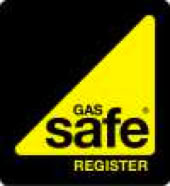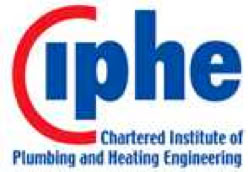
Mike the Boilerman -
Gas Safe Registered boiler and central heating repair technician in west Berkshire

Mike the Boilerman -
Gas Safe Registered boiler and central heating repair technician in west Berkshire
If your Powermax is either broken down or not working properly, most faults can still be fixed. Call or text me on 07866 766364. I am Potterton-trained to work on the Powermax and carry plenty of spares in stock so most faults can be fixed in a single visit. I’m willing to travel almost any distance from here on the west Berkshire/wiltshire border but the more travel time, the higher the cost. One or two faults can’t be fixed so I’d like to discuss the nature of the fault with you on the phone before making a firm commitment to visit.
Things to check if your Powermax won’t work:
(This assumes it won’t start and run at all, rather than the water not being hot enough.)
1) Try re-setting it. The is done with all models of the Range Powermax by setting the rocker switch on the front to OFF for a few seconds, then back to ON again.
2) Make sure the room thermostat is turned to a ‘high’ setting if it is just the heating that won’t work, and the programmer has heating set to ON.
3) If only the heating has failed and if you are inclined, take the big front panel off and give the circulating pump a sharp tap. It may just be seized and a shock sometimes frees it.
If none of these things makes any difference then you’ll need to call a boiler technician out. If you’d like me to visit, contact me on 07866 766364.
The following gives an overview and history of the Powermax. I have a separate website dealing in detail with specific faults and breakdowns that occur with Powermax boilers- www.powermax-repairs.co.uk
The PowerMax falls firmly into the category of 'unusual and interesting'. This may or may not be a Good Thing according to your point of view. The PowerMax has a short but chequered history with many design changes and I'm writing this page to summarise my own understanding as well as help visitors to this page. I may be wrong on some of the details in which case if you know better than me, please let me know.
The basic concept of the PowerMax was to combine both a boiler and a hot water cylinder into a single appliance. Instead of a gas boiler heating water, subsequently used to heat a separate hot water cylinder or thermal store, a gas burner would directly heat the water in a thermal store, meaning the boiler and hot water storage become completely integrated. The resulting product would be an easy-to-install appliance that is fitted instead of a separate gas boiler and hot water cylinder. The PowerMax units are floor-standing, about four or five feet tall and two feet square. they appeals to builders and developers mainly, because they are as simple to install as a combi and provide first class gas-fired central heating and mains-pressure hot water performance for the occupier.
The product was originally designed, developed and manufactured by Range (Range, I believe, were connected to, or were the same company as IMI Range, the hot water cylinder manufacturers). The product was very successful but design flaws meant they turned out to be pretty disastrous from a reliability and maintenance point of view. Around 2002 I believe, the product name and manufacturing rights etc were acquired from Range by Potterton-Baxi resulting in the PowerMax name, along with spares and technical support, being transferred and re-branded as the "Potterton PowerMax".
Potterton substantially re-designed the product before re-introducing it to the market. The Range PowerMax came in several different versions but all were thermal stores heated by gas, were the thermal store itself doubled as the boiler heat exchanger. Potterton abandoned this principle and the New Potterton PowerMax models have a small but otherwise conventional mains pressure hot water cylinder built into them with a separate gas boiler, all in the same box.
The PowerMax models:
I've always found the model numbers and ranges confusing and I'm not certain of my facts in this section, but this is my understanding of the history of the PowerMax models:
Range PowerMax 155
I think the 155 was the first PowerMax to be launched.
The unit is a 'thermal store', heated by combustion gases from a pre-mix gas/air burner at the top which pass downwards through eight tubes, or ducts, in the centre of the water store, to be collected at the base of the unit then exhausted to outside. The ducts are about 30mm in diameter and each contains a twisted stainless steel 'turbulator' to slow the passage of flue gas and increase thermal efficiency. These turbulators have a habit of overheating, partially melting and blocking the passage of flue gas through the unit, and are fiendishly awkward (read 'expensive') to remove and replace. This problem is associated with lack of proper maintenance. There is a gauze filter in the unit sump at the bottom that needs to be cleaned during servicing, according to the service schedule. The problem however, is that access to the gauze is appalling. It is not possible in my experience to remove the gauze for inspection and cleaning without first squashing it flat, and once removed, it is virtually impossible to re-shape and replace correctly. I can't do it to my own satisfaction (so I decline to attempt it these days) and few engineers can either, I suspect. The only way I can think of to do it is to drain the system, disconnect and and remove the boiler, then lie it down flat on it's back to get proper access to the underneath. (I haven't tried this yet!)
The hot water in the thermal store is pumped around the radiators to provide central heating. Mains pressure hot tap water is provided by passing the incoming cold mains water through a coiled pipe inside the thermal store where it picks up heat from the hot stored water. This works very well initially, but in hard water areas can be badly affected by water scale deposits. The effect of water scale is to reduce the temperature of the hot water to begin with, then as the problem worsens the flow rate becomes progressively worse too. These units need either an effective water conditioner/softener or periodic chemical descaling. When not suffering from water scale deposits the hot water delivered can be dangerously hot so a thermostatic blender valve is fitted in the unit to limit the hot water temperature to a safe level.
Oddly, the 155 has two pumps. One operates the central heating circuit, the other is described in the instruction book as a "heat Ex. Pump". The only purpose for this I can imagine is to agitate/circulate water within the thermal store to ensure uniform store temperature and prevent stratification.
Range PowerMax 140 and 155x
These two models appear to be essentially the same appliance, and appear to be a development of the original 155. They both share the same Manufacturer's Installation and Service document and the difference between them appears to be the height of the units. The 155x is about 5" taller than the 140 so probably has a larger storage capacity.
The 140 and 155x are similar to the 155, and are built is the the same format with a sump/flue collector at the bottom containing a gauze which is very prone to blocking and virtually impossible to remove for cleaning and replace correctly/safely. The only way I can envisage is to disconnect and remove the boiler then lie it down on it's back to get proper access to underneath.
The main difference between the 155 and the later 140 and 155x is the method of hot tap water provision. The internal heating coil of the 155 has been abandoned due to the water scale problems and replaced with an external 'plate heat exchanger', believed at the time to be more resistant to water scaling. This adds complexity to the unit as a second pump is now needed to pump hot store water through the heat exchanger during hot water demand, and a flow switch to turn the pump on and off, and a thermostatic blender valve - necessary to prevent the domestic hot tap water reaching dangerously high temperatures.
Range PowerMax 135 and 185
The 135 and 185 appear identical in layout and format, the main difference between them being their physical size (and output).
The design however, has been substantially changed from the preceding 135/155/155x models, with the gas burner but moved to the bottom of the unit so the combustion gases now flow upwards for collection from the top of the unit, and a passive internal heat exchanger installed inside the water store for hot water delivery.
The fan, gas valve and electronics remain at the top of the unit so the unit appears superficially similar under the top cover, but different problems have now been introduced. The designers have abandoned the external plate heat exchangers of the 140 and 155x and reverted to an internal hot water heat exchanger, but this is still fiendishly susceptible to blockage with water scale. The air tube to the gas burner contains a baffle that tends to block with fluff and airborne debris, preventing the unit from running. The need to clean this baffle is not mentioned in the service schedule and I've attended several 185 breakdown calls that have turned out to be caused by this!
Range PowerMax safety concerns:
There is something being kept from us regarding the Range PowerMax. I have several reasons for saying this.
1) A PowerMax user in Oxford died recently of CO poisoning. This was, according to initial news reports, the result of a British Gas engineer incorrectly setting the gas valve on it. This makes no sense to us gas engineers as all PowerMax models are room-sealed and gas valve adjustments, no matter bad, should never result in combustion gas entering the room. The technical details of this case seem to be being kept secret, presumably for legal reasons. I suspect that in addition to setting the gas valve wrongly he also failed to correctly replace the burner flange (using a new gasket as prescribed in the manufacturer's Installation and Service instructions) allowing combustion products to escape into the room, but I have no way of finding out definitively. Two British Gas engineers have now been charged with manslaughter and committed for trial. (Link to local newspaper story).
2) All Range PowerMax spare parts (even non-gas parts) now come with a stern written warning NOT to adjust the gas valve without "relevant training", and to replace the burner flange gasket if it is disturbed in any way. There is no information available (even from Potterton) on what "relevant training" might be.
3) There is a Product Recall Notice on the PowerMax 135. Bizarrely the only mention of this Recall Notice was on the website of the London Fire service, but has been recently deleted. No mention of this problem on the Potterton website.
4) I'm told by a reliable source that there is a problem with the factory-fitted gas valve on the 135. It tends to drift out of adjustment, leading to explosive ignition, and replacement of the original gas valve is advised by Potterton. Any 135 which has had the gas valve replaced will bear a label stating this fact.
5) The flue duct on the Range Powermax is made from aluminium. The Range Powermax is a non-condensing boiler but runs so fuel-efficiently that condensate sometimes occurs in the flue duct. Condensate is acidic and corrodes the aluminium duct, leading to perforation and therefore leaking of both liquid condensate and combustion fumes into the house or flat. The combustion fumes can be lethal if the gas valve is not correctly adjusted and carbon monoxide (CO) is being produced by the boiler. For this reason it is crucial that the full length of the flue is accessible for inspection and safety-checking. (See this page on the risk associated with concealed flue ducts.)
Potterton PowerMax HE 80, HE 115 and HE 150
Potterton, having acquired the 'PowerMax' brand name, completely revised the product, abandoning the principle of a thermal store heated directly by the gas burner in favour of a separate gas boiler and un-vented hot water cylinder, both fitted inside a single casing and called a 'PowerMax'.
If you'd like me to come and repair your PowerMax I'll be happy to do so. Ideally the full length of the flue and air intake ducts will be accessible for inspection. (This is necessary in order to comply with the legal requirement to assess the effectiveness of the air supply and the flue whenever carrying out work on a gas appliance.) Unfortunately many PowerMax installations have flue and air intake ducts concealed behind ceilings etc., in which case inspection panels will have to be present to allow visual checking of the flue.
Replacing a Powermax
I get a regular trickle of emails from people asking me if there is a modern equivalent boiler that can replace a Powermax, and in particular, connect to the existing Powermax flue ducts installed in the ceilings. Unfortunately all new boilers have to be installed with their own specific flue system, so replacing a Powermax always involves replacing the flue system too. Regarding a replacement model, there are no 'all-in-one' format boilers like the Powermax currently on the market that I would recommend. The best option would be a Vaillant EcoTEC combi boiler. For hot water performance equal to the Powermax, I'd suggest an EcoTEC non-combi boiler and a MEGAflo hot water cylinder. The MEGAflo cannot always be fitted due to difficulty installing new safety discharge pipework in accordance with the regualtions, in which case I'd suggest a thermal store hot water cylinder, such as the Gledhill Pulsacoil. Thermal stores are desperately susceptible to water scaling though, so make sure you install a water softener or some other effective scale inhibitor.
My Powermax Repairs website
I also have a site specifically for owners of and repair technicians working on Powermax boilers. It's here if you'd like have a look...
If you like what I write, please Buy me a coffee. Thank you kindly!

Copyright Michael Bryant 2025
Site first published 16th January 2004
Site last updated 13th November 2025
Gas Safe Register 197499, CIPHE registration number 009909L

This website makes use of cookies. Please see my privacy policy for details.